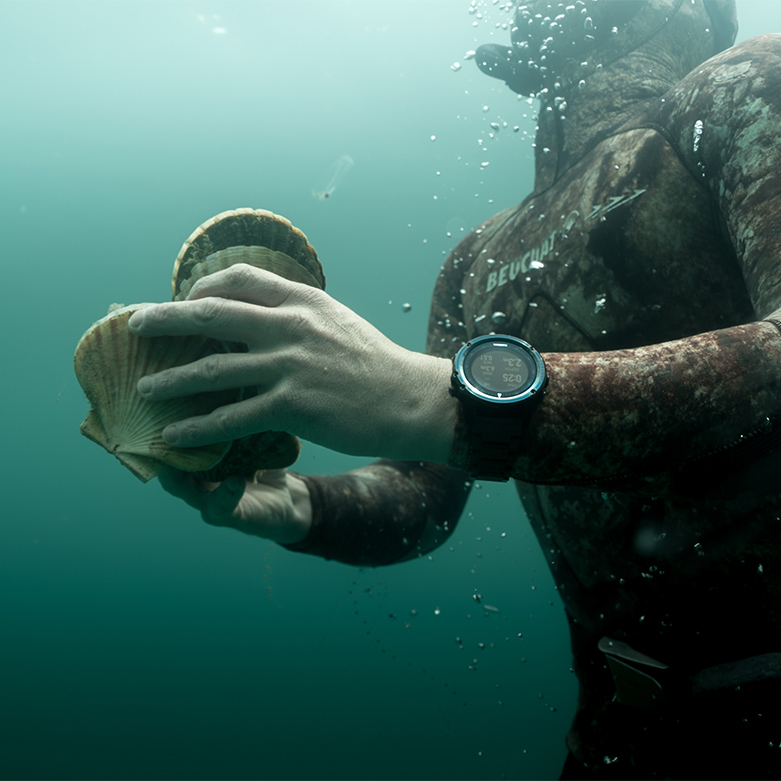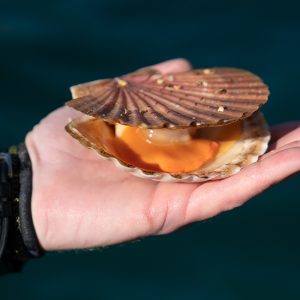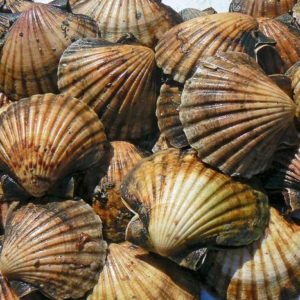A healthy scallop population has provided for the social, economic and cultural wellbeing of mana whenua for centuries and coastal Coromandel communities for decades. There is growing concern by Ngāti Hei and local interests about the depletion of scallops in Opito Bay at the end of the Kūaotunu Peninsula on the eastern side of the Coromandel Peninsula in the Hauraki Gulf.
Locals tried unsuccessfully over several years to engage with MPI to share their concerns about scallop depletion. Their lack of success drove the Opito Bay Ratepayers Association to engage with LegaSea in 2020, in an endeavour to better understand the current state of the scallop population and how it might be enhanced for future generations. A major concern was that there had been no research of the scallop beds since 2010.
Between October and December 2020 the Coromandel Scallop Restoration and Sustainability Plan was developed and a working group appointed to ensure its successful delivery.
At a ceremony on 17 December 2020 Ngāti Hei applied a rāhui, announcing that no permits would be issued for the customary harvest of scallops from Opito Bay; simultaneously the local community supported the initiative with a voluntary ban on any recreational scallop harvesting during the 2020/21 season. These actions were widely publicised throughout the region and online via LegaSea channels.
These were interim measures until Ngāti Hei could gain Ministerial approval for a formal closure of their rohe under the Fisheries Act. That application was made in March 2021. MPI has since contracted NIWA to complete a scallop abundance survey in 2021 with results expected in 2022.
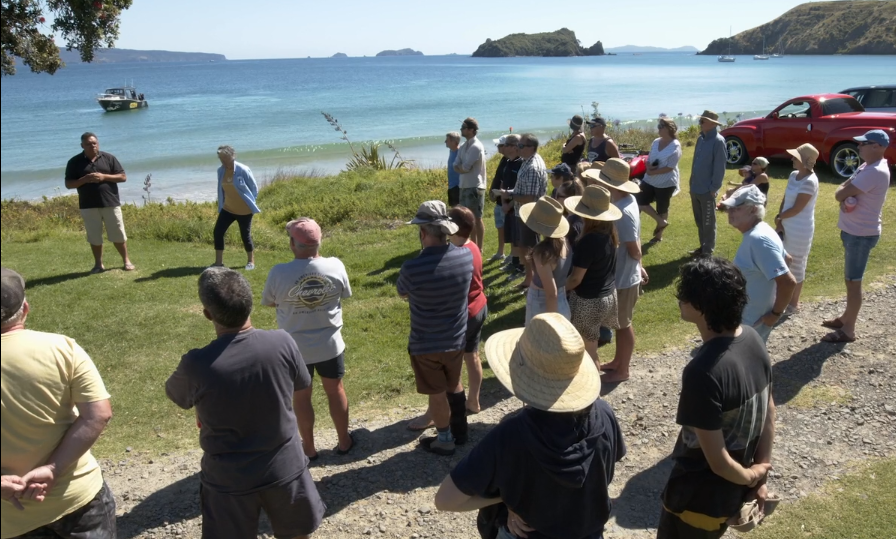
A major element of the Coromandel Scallop Restoration and Sustainability Plan was a citizen science dive survey of Opito Bay, in areas historically known for abundant scallop populations inside and outside the commercial exclusion line. This was conducted between December 2020 and April 2021. Scallop abundance is currently lower than in 2010, but in the same range as MPI’s previous, yet limited, surveys. A total of 157 individual survey replicates at 56 stations were sampled. 1571 scallops were measured and 36% were found to be at or above the 100mm minimum legal size for recreational fishers.
In the commercially fished area there was one scallop 100mm or larger every 26.8 square metres. In the recreational-only area there was one legal sized scallop every 9.5 square metres. The dive survey coincided with the least amount of recreational fishing effort in decades due to the success of and community support for the rāhui and voluntary ban. Had normal levels of effort continue throughout the survey period it is likely that there would have been fewer scallops. The survey probably overestimates the total population of scallops of all size classes by between 1 and 16% due to sampling bias.
Having many small scallops in the population is positive as they grow into the fishery and become available for harvest in future years. However, this survey found there were more large scallops and fewer smaller scallops compared to past surveys, with very few scallops smaller than 60mm. This is a serious concern, and based on reported growth rates there are likely to be fewer legal sized scallops available for harvest in 2022 and 2023.
Therefore, the rāhui and potential formal 2-year closure of the beds is timely and a longer closure may need to be considered.
This has been the most extensive citizen science scallop dive survey known to have been completed in Aotearoa to date. It could be viewed as a model for future low cost, safe and rapid assessments of highly valued local kai moana, seafood resources.
The survey was commissioned in 2020 by the New Zealand Sport Fishing Council and LegaSea in conjunction with the Opito Bay Ratepayers Association, Ngāti Hei and New Zealand Underwater Association.
Darrell Bird and Dive Zone Whitianga provided experienced volunteer skippers and divers, including Holly Costello who helped complete the data set. Dive operations were managed by Warren Maher, President of the Tairua-Pauanui Sports Fishing Club. Ngāti Hei Rangatira Joe Davis provided cultural oversight and advice. The survey report was completed in 2021 by Dave Guccione with input from Paul Warren, Grant Northcott and John Holdsworth. Survey results were compiled into a report issued in May 2021 – ‘Baseline assessment of the scallop (Pecten novaezelandiae) population at Opito Bay, Coromandel, New Zealand, 2021 – a Citizen Science model’.
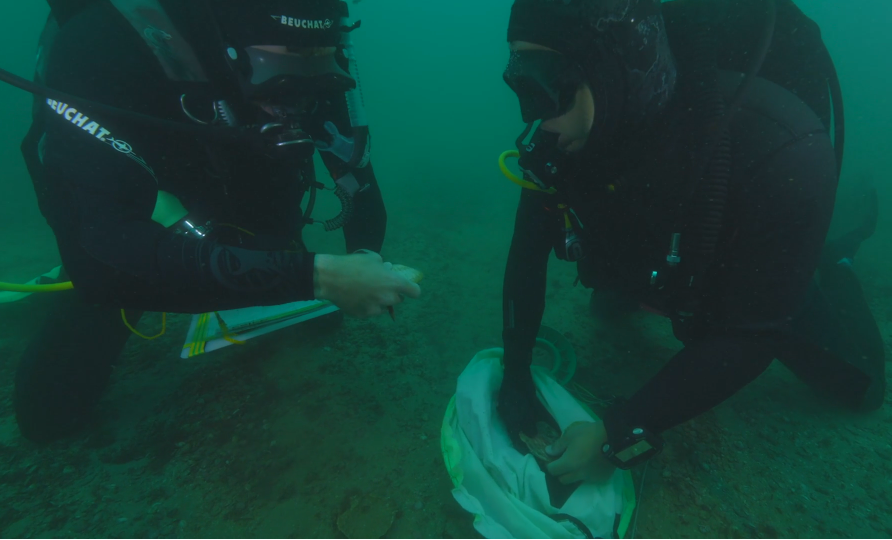
Major findings
1. The survey supports what the community has been saying for many years – there are not many legal size, 100mm, scallops in Opito Bay.
2. 1571 scallops were measured. 36% were found to be at or above the 100mm minimum legal size for recreational harvest.
3. In the recreational-only area –
a. There was one scallop 100mm or larger every 9.5 square metres.
4. In the commercially fished area –
a. There was one scallop 100mm or larger every 26.8 square metres.
b. There was one scallop 90mm or larger every 13.6 square metres. 90mm is the minimum legal size for commercial harvest.
5. Scallop abundance is currently lower than the 2010 survey, but still in the same range it has been previously –
a. Scallop populations have not increased over time.
b. This survey overestimates the scallop population by between 1 and 16%.
c. It likely there would have been fewer scallops had the rāhui and voluntary harvesting ban not been in place over the 2020/21 season.
6. There were fewer small scallops than in the past. This means there are likely to be fewer legal size scallops available in the 2022 and 2023 seasons.
7. The last surveys of Opito Bay scallops was completed by MPI in 2009 and 2010 –
a. The 2020 dive survey was comprehensive, researching 56 sites and 157 individual survey sites.
b. Previous MPI surveys have not covered this many sites.
c. Previous research was dredge surveys, not dive surveys.
8. The dive survey was conducted in depths reaching up to 20m plus. Depth was not a factor that could explain the variation in scallop shell size or abundance frequency between sampling sites in the recreational-only zone and the commercial fishing area of Opito Bay.
